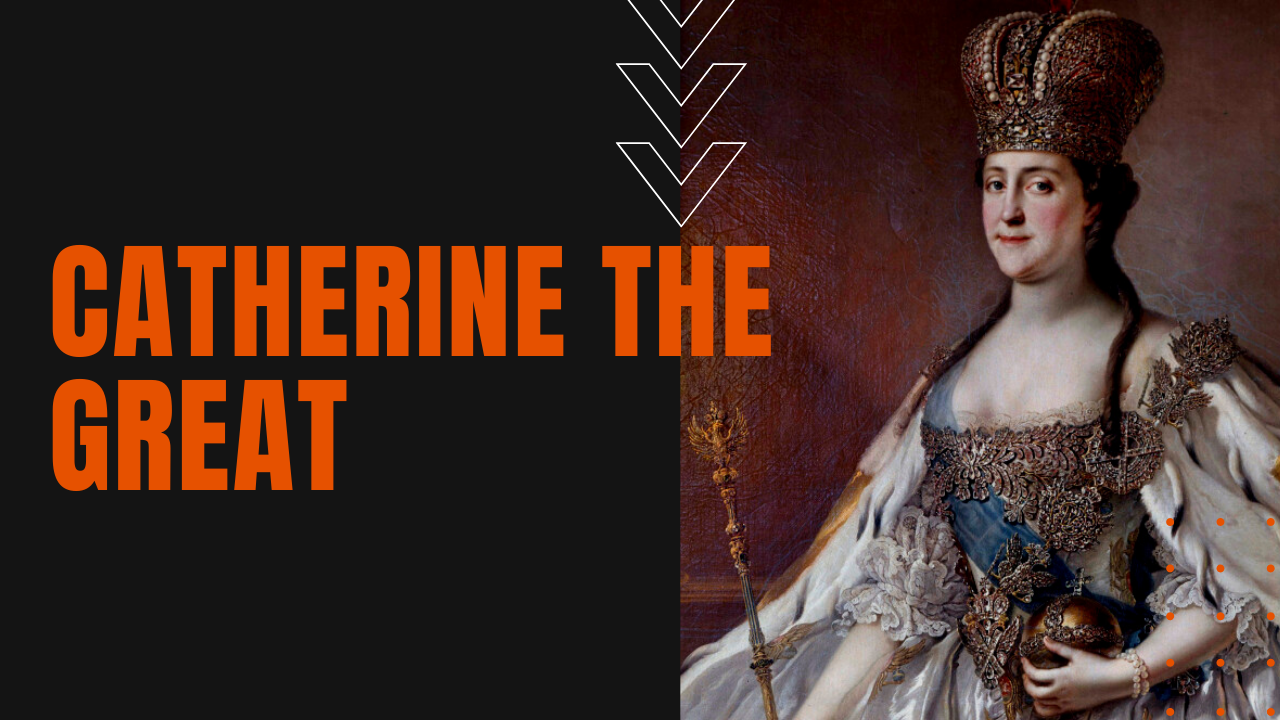Catherine The Great: Conspires, Commands and Conserves

Born Sophie of Anhalt-Zerbst on May 2nd, 1729, Catherine the Great was Empress of Russia from 1762 until her death in 1796, giving her the distinction as Russia’s longest-ruling female leader.
Coming to power following a coup d’etat that overthrew her husband, Tsar Peter the Great, under her reign, Russia grew from near third world obscurity to one of the greatest powers in all of Europe. Proving the age-old adage that an angry wife can be detrimental to a husband’s health, Catherine’s marriage to Tsar Peter the Third proved to be a raging disaster from the start.
Catherine Conspires to Overthrow Her Husband The Tsar
When Catherine became pregnant with her second child, Anna, due to various rumors of Catherine’s promiscuity, Peter rejected his biological connection to the child, proclaiming that Anna should “Go to the devil!” Catherine wrote in her diary that “I used to say to myself that happiness and misery depend on ourselves,” and to improve her sense of happiness, she conspired with other political opponents to Tsar Peter, leading to his assassination on July 8th, 1762.
While his assassins remain unclear, after an autopsy, Peter’s official cause of death was labeled a severe attack of hemorrhoidal colic and an apoplexy stroke.
Catherine The Great: Ruler of Russia
Once in power, Catherine aligned herself with noble strongmen and generals alike, rapidly expanding the Russian Empire by conquest and diplomacy. In the south, the Crimean Khanate was crushed following victories over the Ottoman Empire in the Russo-Turkish Wars, followed the colonization of the Novorossiya territories along the coasts of the Black and Azov Seas.
A great admirer of The Enlightenment and Peter the Great, Catherine continued to modernize Russia aligning with Western European standards, including the foundation of the Smolny Institute for Noble Maidens, the first state-funded university-level institution for women in Europe, as well as the Moscow Orphanage for disadvantaged children and the Bolshoi Theater.
She also established the Hermitage Museum in St. Petersburg, Russia, sending out Soviets or art collectors to acquire famous works of art throughout Europe and the world. Today, the Hermitage represents the second-largest art museum in the world, which celebrates its founding each year on December 7th with ceremonies known as Saint Catherine’s Day.
